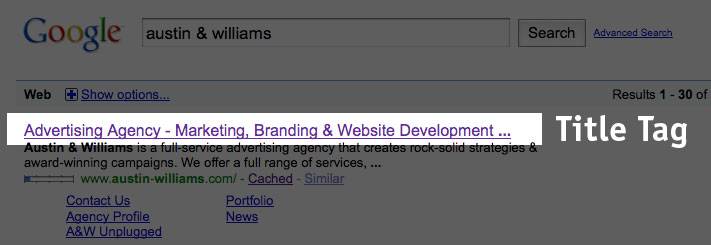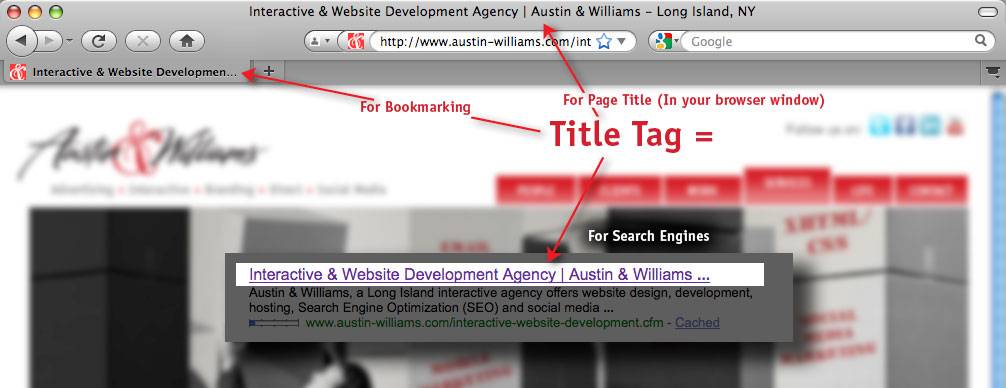Search Engine Optimization (SEO) has been a hot topic over the last few years and it’s only getting hotter. Like Social Media, SEO is quickly evolving into a very powerful form of marketing. With evolution comes the good (research tools and technologies), and the bad (anything “black hat,” which despite warnings, still runs rampant in the industry). Search Engine Optimizers, like me, spend an enormous amount of time and energy reading, testing and writing about these new developments and technologies. Surprisingly, it’s the very basic elements that still raise the most questions, so now is as good as a time as ever to take a step back and talk about them.
One of the most difficult aspects of SEO is, unquestionably, explaining it. And there are still many that believe SEO is all about stuffing the “tags” in the HTML code and that alone will get their Web site ranked by Google. Certainly that is not the case, because The Art of SEO, easily the most comprehensive book ever written about the topic, would have been the size of a college term paper, as opposed to the roughly 600-page “bible” it actually is.
It must be repeated: tags are a very important aspect of SEO, but make up less than 10 percent of the actual campaign (if that). If your strategy begins and ends with these tags, the potential of your Web site ranking in the search engine will go only as far as the effort you have put in. And if tags are your sole focus, you can pretty much put a bow on your SEO campaign, because it will end before it begins.
For those still catching up with the lingo, these tags that everyone speaks of are the title tag, the meta description tags, and the infamous meta keywords tag. For the most part, the meta tags in particular aren’t even visible (so you think), but are incredibly important to any SEO campaign, but the question that rarely comes up in the discussion is “Why?”
The Title Tag
The title tag still is and probably will always be one of the first things that needs addressing when beginning an SEO campaign. Why? It’s pretty simple: the title tag is the first element of a Web site that search engine spiders use to predetermine what your site (or page) is about. The title tag is also the first thing users will see in the search queries before hopefully clicking through to your Web site. Let’s look at the connection and this tag that is staring at us whenever we are on the internet.


Quick Tips About Title Tags:
- Uniqueness and relevance are ongoing themes in SEO. Every page on your Web site is unique, so every title should also be unique.
- It’s called the “title” tag for a reason. Title tag should describe the page it sits atop. Don’t keyword-stuff because it never works. Keep it concise, simple and accurate.
- Different projects lead to different strategies. Depending on your Web site strategy, phrases work better than only the keyword(s) you are optimizing the given page for (but this strategy depends on the project).
- Stop stuffing!! Listing 30 keywords separated by commas doesn’t work because users will not click on this result in Google (or any other search engine), and search engines won’t crawl a page that appears to be optimized for 30 keywords. Search engines prefer pages that have a theme and are typically optimized for one or two keywords. This ineffective, lengthy list technique is known as keyword stuffing.
- Consistency – once you have a formula that works, keep a consistent structure from page to page. It is not only search-engine friendly, it is also user friendly.
Meta Description Tag
The meta description tag has received a pretty bad rap over the years and despite not heavily contributing to any rankings boost, it is still a very important aspect of any Web page and, in turn, SEO campaign. The description should simply describe for the search engines (and the users scanning search results) what the page is about. If a user gets past the title tag without clicking, it is up to your description tag to entice them to click one step further to your Web site.

The meta description, like almost every element of a Web site, has been abused and has lost steam in helping sites rise in the rankings. However, it should still be utilized because it acts as the first marketing message and differentiator, after the title tag, in the search results.
Quick Tips About Meta Description Tags:
- Like the title tag, every page should have a unique meta description tag.
- The description tag should accurately describe the page it’s focusing on.
- It should be used as the second stepping stone after the title tag, use (not abuse) keywords, and effectively entice the user to click forward to your Web site (this is your Web site’s marketing message).
- Search engines typically bold the keywords in the meta description tag that are used in the search query which is helpful and attractive to the searcher.
Meta Keywords
The infamous and most abused tag in the history of SEO is undoubtedly the meta keywords tag, thus the reason Google puts no weight on it in its algorithm. We don’t use it in any of our campaigns, but if you are going to use it, keep it to the keywords you are actually focusing on throughout the copy of the page. The one thing the meta keywords tag is great for is competitive research. Let’s simply leave it at that.
SEO is not easy. It is very time consuming and involves hours upon hours of research, implementation and follow through. SEO is not about “stuffing keywords into tags:” it’s about what your Web site (and in turn, what your business) has to offer, how it’s designed, how it’s built and what other relevant sites are linking to it that will get you the page one results you are looking for.
Remember . . . everything above the body tag in HTML is crucial to the success of any SEO campaign, but the content that is actually visible to users – rather than just the spiders – is the most important aspect and foundation of any site.eb site.








